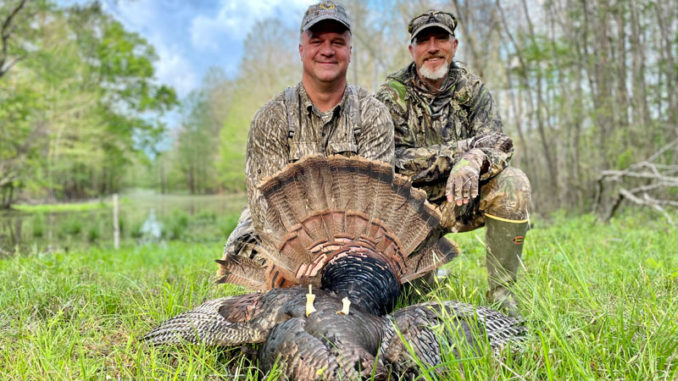
Louisiana turkey season started with a bang this year (literally) for me.
Ten minutes into the youth turkey opener and my 10-year-old son, Anders, had one flopping at 32 yards. We hunted hard the rest of the season and were able to call up four more within gun range; two longbeards escaped, but two more got carried out on my back.
Over the course of time, turkey hunters have noticed the decline in the turkey population in our area. But there is good news this year.
LDWF’s Resident Small Game/Wild Turkey Program Coordinator Cody Cedotal had some very encouraging news, reporting that the numbers show this was the best season Louisiana has ever had since harvest reporting began in 2009.
Preliminary reports are showing hunters bagged 2,846 birds this year. This total is up over 50% from 2021, when 1,886 gobblers were reported.
Cedotal noted a few things that likely contributed to the record setting year.
First, many areas of the state had an above average poult production in 2020, which led to more adult gobblers for this season. Second, weather conditions were favorable for the first few weekends of the season. He is also optimistic that the season date change which began in 2018, is having a favorable impact on our population.
Long-term goals
While this year’s harvest statistics seem to point to a possible positive “turn in the road” for our turkey population, the state is also working to manage the long-term viability of our resources. It’s good news to hear that the state is making turkey research a priority and putting forth resources to not just maintaining, but also increase the turkey population.
They have a major research program that has been going since 2014 where they are tagging birds and conducting nesting and demography studies. They are looking at turkey movements, nest success, brood survival, brood range, incubation ranges, etc. They are comparing different habitats and management practices in different areas of the state to gain crucial knowledge on making future decisions for the betterment of our population. They are also collecting blood samples for genetic and disease testing.
It should be noted that the turkey decline is not just a Louisiana problem, it’s a problem all over the south.
Therefore, Cedotal and other state researchers are working hand in hand with other states, leading turkey biologists and professors throughout the nation to get a better handle on the downward trend. Cedotal and one of the leading professors and turkey researchers in the country, Dr. Bret Collier from LSU, are involved in ongoing research programs which should produce some very helpful data in the near future.

What can we do?
So, what can we as turkey hunters/land managers do to be a part of the solution to keep turkey success on the rise?
It’s relatively simple, yet seems to be something landowners have trouble doing — habitat improvement! Whether you own five acres or a 2,000-acre farm, if you can just make subtle changes to improve the habitat, it will make a difference, Cedotal said. Deer hunters spend countless hours to improve deer habitat, but it often isn’t the same for many of the turkey hunters.
One of the easiest ways to improve habitat is through the use of prescribed burning. This will increase early succession vegetation, increase available food for turkeys, and improve viable nesting and brood areas for the hens. Fire seems to make everyone a little nervous and rightfully so, but Cedotal and the LDWF staff is more than willing to help out. Contact your local biologist and they would be happy to assist you whether it be with prescribed burns or any other ways to improve your land.
The LDWF and turkey hunters hope this positive trend will continue. So far this year, the weather has been conducive for good nesting/poult success, but you never know what Mother Nature has in store. LDWF will be out conducting surveys soon to measure actual results.
Hopefully, you were one of the lucky hunters that were included in the 2,846 birds that were taken this year. I’ve been chasing these wily birds since the mid-90s, and the feeling never changes. There is nothing like hearing that booming gobble reverberate through the woods, the spitting and drumming as he gets within gun range, and the shaking and shortness of breath that this causes. Every serious turkey hunter out there knows the feeling.


